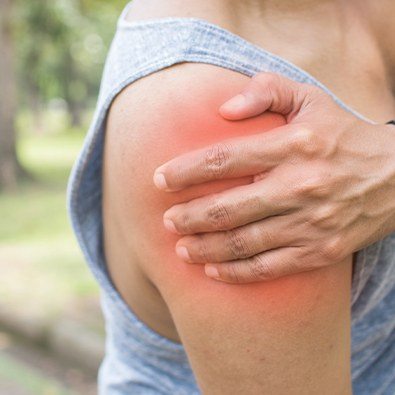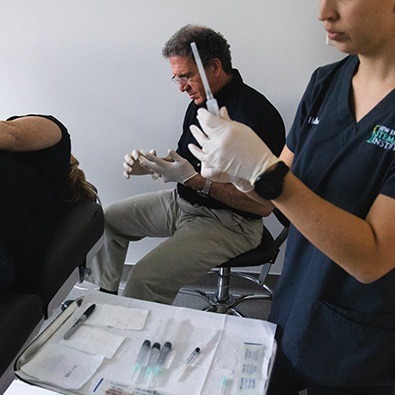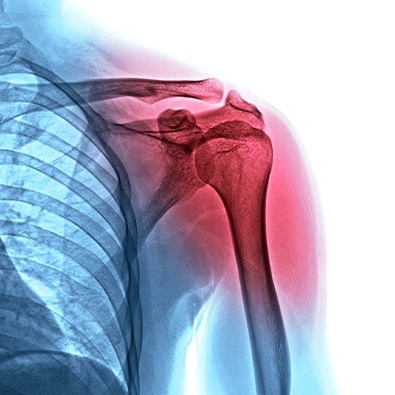
Fax: (860) 430-9693
Glastonbury, CT 06033
A shoulder injury can be one of the most frustrating musculoskeletal problems because it’s a rather complicated joint, and when it doesn’t work properly, it can feel like the entire arm is useless. Rather than just treating the symptoms like pain and stiffness, Dr. Tortland can determine exactly what is causing a patient’s issues, and then they can provide non-invasive treatments that help relieve pain and improve long-term function. If you’ve been diagnosed with any of the issues below, or if you just know that something is wrong with your shoulder, give us a call today to start treating shoulder injuries and pain in Glastonbury, CT.


One of the most feared injuries in all of sports, rotator cuff injuries are usually the result of repetitive overhead movements, such as throwing a ball, swinging a racket, or lifting heavy weights. While many shoulder problems are attributed to a strained or torn rotator cuff, the cuff itself is actually a group of muscles and tendons that keeps your upper arm bone firmly within the socket of the shoulder. Often, treating a rotator cuff injury involves physical therapy, regenerative injections, and activity modification to prevent further issues.
Learn More About Rotator Cuff Injuries

The shoulder is a ball and socket joint, and each one is reinforced with a rim of cartilage called a labrum. It’s where the ligaments that support the joint attach, so even small tears can cause quite a lot of problems, leading to pain and/or an unstable joint. With targeted injections of PRP or prolotherapy, we can reduce the inflammation in the joint associated with a labrum tear, which will both reduce pain as well as allow the joint to move better.

While the shoulders are susceptible to developing arthritis, it’s much rarer compared to other joints. It’s brought on by a gradual loss of cartilage in the area, which essentially cushions the joints and allows them to move seamlessly. While there is no treatment available today that can regrow joint cartilage, we can use different techniques to reduce inflammation and heal the surrounding muscles, tendons, and ligaments so a patient enjoys pain relief and a wider range of motion.
Learn More About Shoulder Arthritis

When a tendon is irritated or suffers a slight tear, the body tries to repair it by depositing a little calcium in the area. Over time, this calcium can turn into a nodule that “catches,” leading to persistent pain. Instead of just treating the pain, we can use the TenJet procedure to find exactly where the troublesome nodules are, break them up, and then remove the pieces during the same treatment.
Learn More About Calcific Tendonitis

An acromioclavicular (A-C) joint injury involves the area where the collarbone and a bone at the top of the shoulder blade meet. It usually occurs in relation to falling on the shoulder and/or breaking the collarbone. It’s fairly common for individuals who were wearing a seatbelt during a car wreck, as the force can break the collarbone, and this, in turn, can lead to an A-C joint injury. These can often be easy to miss or misdiagnose, but thanks to our use of diagnostic ultrasound, we can determine if an A-C joint injury is present and then treat it directly.

When the tendons of the shoulder rub up against the shoulder blade, as you might imagine, this doesn’t feel very pleasant! This is a type of joint impingement, and activities like painting, lifting, swimming, and pretty much anything that involves a lot of overhead movement can lead to it. Tendon injuries can be chronic or degenerative, and determining which type a patient is dealing with will alter our approach to treatment. Usually, solutions like activity modification, physical therapy, and regenerative injections can help stop any pain and repair the injured tendons.